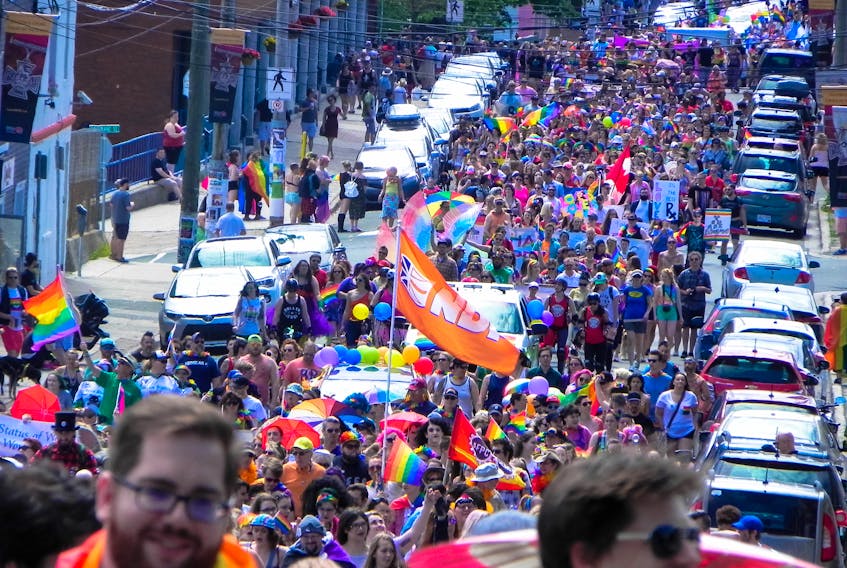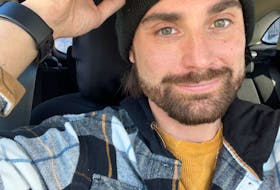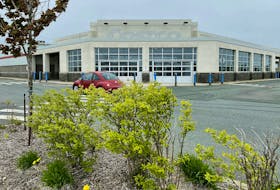When former teacher Sue Rose was told by the province’s then education minister in the early 1990s that she would be fired if she opened up publicly about being harassed by a homophobic colleague, she marched in the pride parade with a plain brown bag over her head.
The well-known St. John’s advocate has long worked hard on bringing inclusiveness to the province’s schools.
She is vice-president of Egale Canada, which advances equality for lesbian, gay, bisexual and transgender people and their families and a recipient of the Newfoundland and Labrador 2017 Human Rights award.
She first marched openly in 1998.
“Before that I would have been fired (for being open) …. A guy in the staff room didn’t want to sit next to me because I was taking care of friends with AIDS,” she said.
“(1998) was a huge deal for me. It meant so much for me to do that.
“Prior to that, every year I was in disguise.”
She had endured harassment as a teacher in the denominational education system. When she’d made an issue of being bullied by that colleague, she was told her job was on the line.
“The only way to protest (at Pride) was with a brown bag with nothing on it. I cut two holes for eyes because I felt like I was invisible,” Rose said. “People thought I was crazy and said to put a bit of colour on it. I said, ‘I don’t want a bit of colour.’ I am wearing an ugly brown bag.”
Back in those days, the pride parade — which has hit about 1,800 people in recent years — drew about 30 or 40 people. It was more of a walk than a march, Rose and others recalled.
“We really didn’t have enough to march,” Rose said. “We were standing on the (City Hall) steps, just strolled on the sidewalk. We didn’t walk in the streets.”
One particular early year, she said the group was walking by the terrace off west Duckworth Street, the group was subject to some homophobic slurs like “f—king faggot.”
When some in the LBGT group spoke up, the bunch of heckling men mooned them.
“They turned around in the window and stuck their arses out,” Rose recalled.
About a week later when Rose got her film developed and printed, she went back and knocked on the door and asked to speak to “the boys who owned the arses.”
“Their mouths just hit the floor,” she said. “They got the point — they felt embarrassed.”
Rose said the earliest pride parades took place in St. John’s in the 1980s and people were just too afraid to come out, resulting in the low numbers.
In the early 1980s, there wasn’t yet a parade, recalled Tree Walsh.
“When I was involved in organizing Pride, it was a very small affair — just in the community. But it was back then that the traditional fire on the beach began. We would have dances, parties, bowling, but no parade,” she said.
Peg Norman, a St. John’s businesswoman, was also at those early parades, cobbled together before gay rights were even in the Human Rights Code.
Walks home from gay bars in St. John’s such as Solomon’s and Priscilla’s were scary as people were at risk of being beaten.
“If you were walking home late at night and you were a lesbian or a gay man, you always had to be very careful. You would do it with someone else or if you couldn’t, you would do it fast,” Norman said, recalling one young woman who was jumped at the top of Garrison Hill and would not go to police because of risk of being exposed and dealing with the repercussions.
Gerard Yetman first participated as a member of the AIDS committee back in the mid-1990s.
“What I remember is being at City Hall and a bullhorn and probably about 30 people,” he said.
At the time, the then deadly AIDS was considered by the general public as a gay disease and there was great fear of being out.
“There wasn’t that openness in that community. The fear of being identified was much higher than what we are dealing with today. It wasn’t an organized event like it is today, but like-minded people coming together. A lot of people coming out had lost members of the gay community to HIV. It was a different time for sure.
“At that time, there was still a very high risk to coming out and being in the media …. People were afraid they could lose their jobs and housing, which kept people from participating.”
Most people who did turn out worked for community organizations like the women’s centre or other non-profits centred around activism, so were not worried about being seen at Pride.
Yetman spent 20 years out of the province and returned to the role of executive director of the AIDS Committee of Newfoundland and Labrador.
The huge turnout at Pride now is great, he said but suggested there’s potential for Pride to become a professional organization as it is in other cities with paid positions and a revenue-generating event for the community.

NDP Leader Gerry Rogers, the province’s first elected out politician and Norman’s spouse, said while early marches were about trying to gain rights for the first time, it’s about counting achievements now, as well as furthering rights.
“One of the things notable in the early days we were marching in defiance, marching for our rights and now we come to the point where different years we have won a certain battle. We are marching in celebration of getting sexual orientation recognized, we have marched for gender identify and expression and it’s a celebration of having same-sex marriage legalized,” she said.
Rogers would come home in the summers for the event during the 1980s and moved back to the province about 26 years ago.
“We were small but passionate. We were so determined,” she said.
She recalls labour unions like CUPE being supportive, even paying to bus Pride participants to the bonfire in Middle Cove. Other groups who were early Pride supporters included Planned Parenthood and Oxfam.
“It’s so wonderful to see the support grow,” she said, adding the event now celebrates the hard work of those early lesbian, gay, bisexual and transgendered (LBGT) activists, as well as the dedication of young Pride participants to demanding more rights.
She also noted the NDP as a party was on board with Pride parade early on supporting, and marching.
“It took many, many years for the other political parties to join in and support us. They were afraid they would lose support. Now they all scramble to get space and coverage,” she said.
The Pride week parade in St. John’s is Sunday at 3 p.m., following the 1 p.m. flag raising at city hall

Barb Sweet is an out reporter.
barbara.sweet @thetelegram









